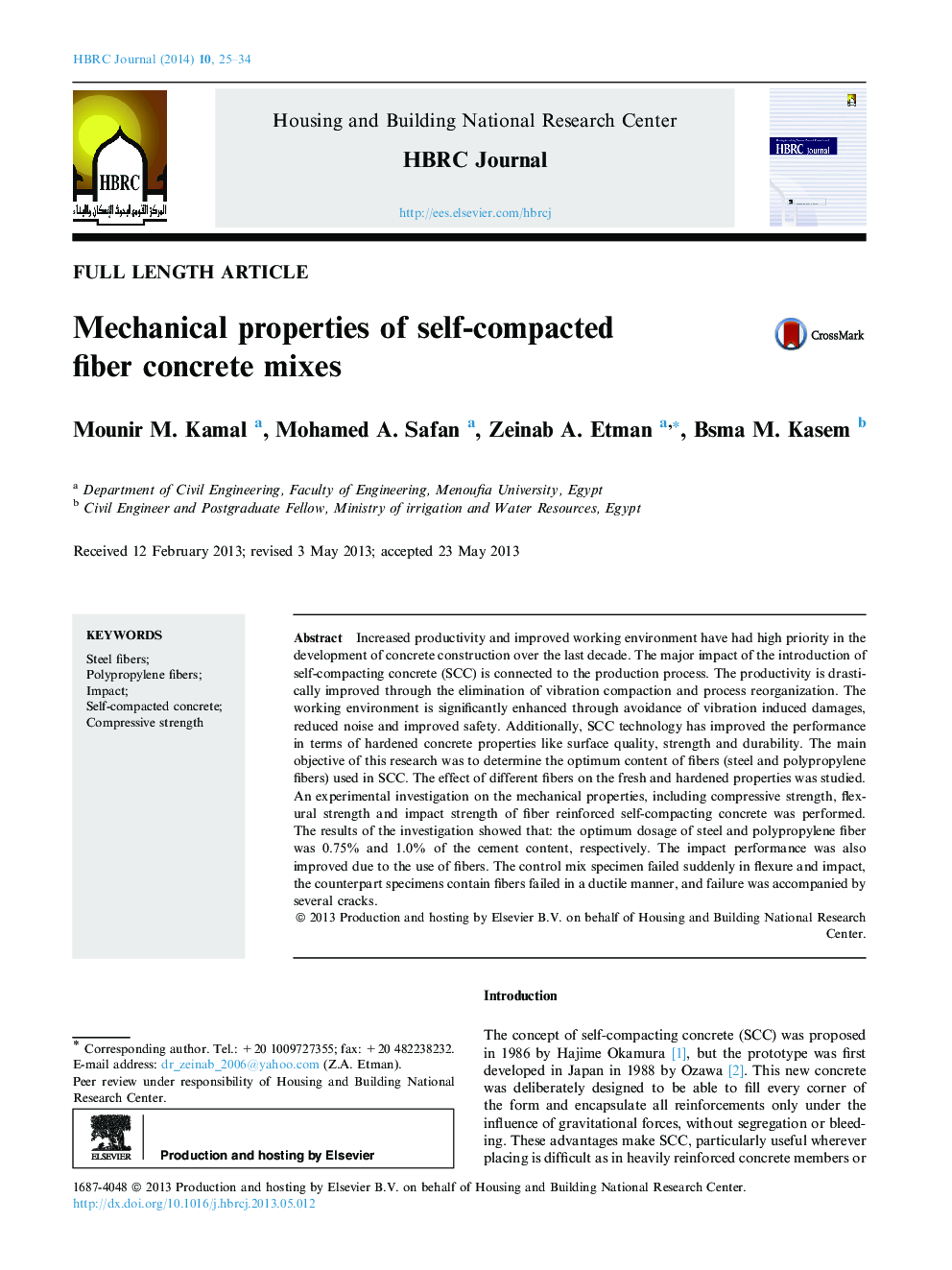| Article ID | Journal | Published Year | Pages | File Type |
|---|---|---|---|---|
| 274678 | HBRC Journal | 2014 | 10 Pages |
Increased productivity and improved working environment have had high priority in the development of concrete construction over the last decade. The major impact of the introduction of self-compacting concrete (SCC) is connected to the production process. The productivity is drastically improved through the elimination of vibration compaction and process reorganization. The working environment is significantly enhanced through avoidance of vibration induced damages, reduced noise and improved safety. Additionally, SCC technology has improved the performance in terms of hardened concrete properties like surface quality, strength and durability. The main objective of this research was to determine the optimum content of fibers (steel and polypropylene fibers) used in SCC. The effect of different fibers on the fresh and hardened properties was studied. An experimental investigation on the mechanical properties, including compressive strength, flexural strength and impact strength of fiber reinforced self-compacting concrete was performed. The results of the investigation showed that: the optimum dosage of steel and polypropylene fiber was 0.75% and 1.0% of the cement content, respectively. The impact performance was also improved due to the use of fibers. The control mix specimen failed suddenly in flexure and impact, the counterpart specimens contain fibers failed in a ductile manner, and failure was accompanied by several cracks.
